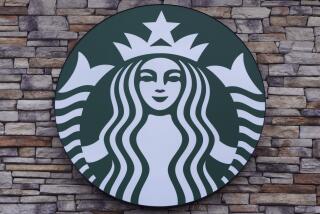No. 2 at Coca-Cola Resigns; Firm to Divide Into 4 Units
ATLANTA — Coca-Cola Co., the world’s biggest soft-drink maker, said Sunday that President and Chief Operating Officer Jack Stahl resigned and that it will reorganize into four business units to try to revive sales.
Stahl, 47, is leaving after 11 months as second-in-command to Chief Executive Doug Daft, who chose the 20-year Coca-Cola veteran to help him get the company back in touch with its customers. Stahl’s last day at the maker of Coca-Cola Classic, Diet Coke and Sprite was Friday, spokesman Rob Baskin said.
Stahl helped Daft create Coca-Cola’s new structure, which divides the company into the Americas, Asia, Europe/Africa and new-business-ventures units. Each division’s top executive will report to Daft. The CEO is trying to make Coca-Cola more nimble at responding to consumers in each region to boost sales after about two years of sluggish demand.
“Jack Stahl left because they eliminated his job,” said Manny Goldman, a former analyst at ING Barings who recently became a consumer products consultant. “Coke’s loss is going to be someone else’s gain.”
Stahl wasn’t available for comment.
The shares of Atlanta-based Coca-Cola fell 15 cents Friday to close to $52.55 on the New York Stock Exchange. They have fallen 14% this year.
The division heads for the new units include Jeffrey Dunn, who will lead the Americas unit; A.R.C. “Sandy” Allan, who will oversee Asia; and Charles Frenette, who will manage Europe/Africa. The leader of the new-business unit will be named shortly, the company said.
The reorganization continues the aggressive changes Daft has made since taking charge of Coke about a year ago. The 57-year-old has been moving decision-makers into local markets, and he has fired workers and pushed for more sales of juices and noncarbonated drinks.
Daft took over from M. Douglas Ivester, who stepped down after a turbulent two years as chairman and chief executive. Ivester had resisted pressure from investors to name a top lieutenant to help handle public relations gaffes such as a tainted-bottles scandal in Europe and slow sales worldwide.
When Stahl was named Daft’s No. 2, analysts and investors said that with his financial and U.S. experience he would complement Daft, an Australian who spent much of his career in Coca-Cola’s Asian business.
“You need someone to bounce ideas off of when a No. 1 and No. 2 are working as a team,” Goldman said. “My guess is [Daft and Stahl] weren’t a team. If they were a team, there wouldn’t be any restructuring.”
Stahl’s previous positions at Coca-Cola included investor relations specialist as well as chief financial officer and president of the North American group. As chief financial officer, Stahl encouraged then-CEO Roberto Goizueta to unload the Columbia Pictures movie studio and focus on the main business of selling soft drinks.
In the last two weeks, Coca-Cola has announced marketing ventures with Procter & Gamble Co. and Walt Disney Co.
The company is forming a joint venture with Procter & Gamble to sell products including Sunny Delight and Minute Maid drinks and Pringles chips. It will sell juices and milk drinks that feature Disney characters such as Mickey Mouse and Winnie-the-Pooh.
Coca-Cola also plans to spend $300 million to $500 million this year in one-time marketing initiatives to help boost case sales by 6% to 7%.
Investors have said Daft’s case-sales goal may be too ambitious for a company whose sales rose an average 5.6% in the last five years and gained 4% last year. A case equals 24 eight-ounce servings.
Fourth-quarter profit from operations rose 36% to $1.04 billion, or 42 cents a share, from $768 million, or 31 cents, a year earlier. Sales fell to $4.90 billion from $4.93 billion. Case sales rose 3%.
More to Read
Inside the business of entertainment
The Wide Shot brings you news, analysis and insights on everything from streaming wars to production — and what it all means for the future.
You may occasionally receive promotional content from the Los Angeles Times.










